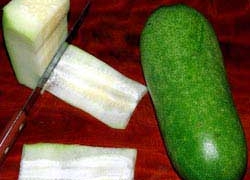The Endless Cornfields in Central Northern United States Can Distill Thousands of Barrels of Ethanol from Corn Waste!
 |
Corn can be processed into ethanol to generate energy. |
The endless cornfields in central Northern United States can distill thousands of barrels of ethanol, a clean fuel with a high octane rating that can offset the global oil shortage.
However, there is a need to find a more economical way to produce corn fuel, as currently, it takes about two-fifths of a barrel of fuel (usually natural gas) to produce one barrel of ethanol.
There is only one approach: to process corn into ethanol for energy generation. To produce one barrel of ethanol, approximately two-fifths of a barrel of fuel (usually natural gas) is required, not to mention the fuel needed for fertilizer production for corn, running farm machinery, or transporting ethanol to market.
This year, it is predicted that the U.S. will produce five billion barrels of ethanol, equivalent to about 3% of the current gasoline supply, with many ethanol distillation plants being constructed. Recently, President Bush has called for research to produce ethanol more efficiently.
But acknowledging the potential of ethanol, advocates in this direction understand that America must find ways to produce it with less natural gas consumption – possibly using coal, as some distillation plants currently do to cut costs.
According to William A. Lee, Director of Chippewa Valley Ethanol in Benson, Minnesota, and former president of the Renewable Fuels Association, a chemical ethanol trading organization: “In this field, we cannot only see the immediate results; we must think about a more stable future.” Engineers are experimenting with various methods. Here are some of the most promising approaches.
Learning from the Digestive System of Cows
Many companies are building ethanol production plants next to livestock farms, allowing corn to be processed at the ethanol distillation plant, with the corn waste – primarily the leftover starch – used as animal feed.
The corn waste – after passing through the cow’s digestive system – along with manure can be returned to the plant and put into a device called an anaerobic digester, which creates conditions similar to a cow’s stomach so that bacteria can produce methane, a component of natural gas.
Locating Production Plants Close to Cattle Farms
The corn waste, referred to as distillers grains after distillation, can be vaporized to convert from carbohydrate form to hydrocarbon. If distillers grains are used as animal feed, their manure can also be vaporized into hydrocarbons.
Ethanol requires energy when it vaporizes. Typically, steam is used to cook a mixture of starch and water, maintaining this mixture at an ideal temperature for enzymes to separate the chemical components of starch and ferment the sugars in corn into alcohol. The mixture is then heated to distill into alcohol, and the distillers grains are often dried and used as dry feed for livestock.
Some ethanol producers skip the drying process of distillers grains if there are enough livestock nearby to consume the distillers grains immediately. In Sioux Center, Iowa, the Siouxland livestock and energy company opened a plant in 2001 near a farm with about 10,000 cows.
By not drying the distillers grains, Siouxland saved the plant approximately 24,000 BTU of natural gas, or about 6072 kcal (BTU is a unit of heat measurement used in the U.S.; 1 BTU is approximately equal to 253 cal) per barrel of ethanol – meaning it uses less than one-third of the natural gas it generates, producing 85,000 BTU, or about 21505 kcal per barrel when burned. (This calculation does not account for the electricity the plant uses or the diesel fuel to transport ethanol to the market).
Creating a New Type of Gas
At the Iowa Energy Center, a laboratory located in the midst of cornfields near Iowa State University, engineers are researching another technical method.
A series of steam pipes, small iron barrels, drills, and funnels are being assembled by a newly established chemical research company called Frontline Bioenergy, which is replacing natural gas with another type of gas on a small scale.
This new gas is made from the part of the corn plant, not the kernels, with the plant being chopped into pieces about 1.27 cm long and placed into a barrel containing steam and a little air.
In a process called “partial oxidation,” steam separates the carbohydrates of the plant into two gases: hydrogen (H) and carbon monoxide (CO). Both of these chemical components burn easily as an alternative gas to natural gas.
About 90% of the raw material from the corn plant is converted into gas, with a small amount remaining as minerals that can be sold for other uses. This gasification process uses a small amount of natural gas to initiate, but afterwards, it generates its own gas to sustain its reaction.
According to Norman Reese, CEO of Frontline Bioenergy, “This is a new gas that replaces natural gas.”
This process uses part of the corn plant, referred to as straw, which is left in the field. It can be burned, but that would be much dirtier.
But Back to the Cows
Many things can be converted into gas, including manure. According to Jerod Smeenk, Chief Engineer at Frontline Bioenergy, “Manure is a processed biological material.”
A company in Minnesota, Chippewa Valley Ethanol, plans to test a plant within a year that uses corn distillation into alcohol. This choice is not ideal since distillers grains are not waste; they can be used as livestock feed. However, it is a low-risk option for Chippewa, which can invest in purchasing the necessary equipment to collect straw if gasification proves promising.
Companies like Chippewa can enhance their commitment to environmental protection, but they are also impacted by energy prices in the market. Lee stated, “When the ethanol industry started 20 years ago, it required twice the amount of natural gas that one barrel of ethanol could produce, but then the gas became much cheaper.”
“Currently, Chippewa is paying $12 for 1 million BTU of natural gas, compared to $2 in the mid-1980s, and gasification seems sensitive to the economic issue when natural gas costs about $10 or more for one million BTU,” Lee continued.
At Frontline, John Reardon, Director of Research and Development, spoke about the gasification project: “This is just the beginning. Our economy is using energy formed from decaying plant biomass, and we need to start somewhere.”
Cẩm Nhung




















































